A Unique Peach Recipe and Pies with NO MORE Soggy Bottoms!
The New York Times has a super website (www.cooking.nytimes.com) that I frequent often. Today they’re talking about all the things you can do with fresh peaches and sharing some unique recipes for them well.
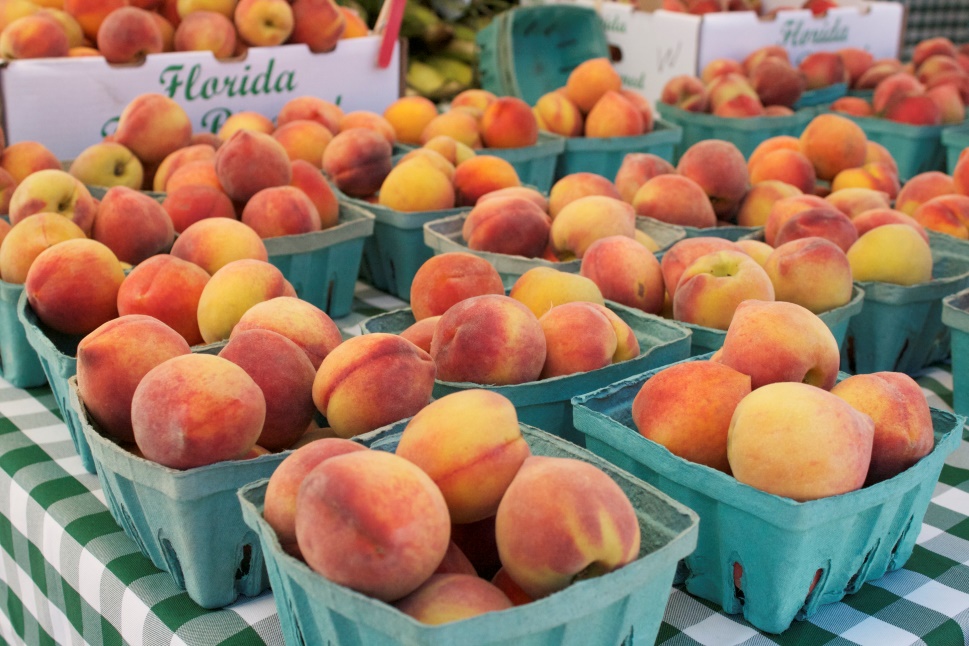
Since it is peach season (our in-town orchards are opening their fruit stands today, as a matter of fact), I thought you might like to know what the Times had to say.
But first (always part of my promotional), the health benefits of fresh peaches: In a nutshell (according to the latest research from Rutgers University), peaches are low in calories (100 g just provide 39 calories), and contain no saturated fats. And look at what one medium peach contains:
vitamin E
vitamin K
niacin
folate
iron
choline
potassium
magnesium
phosphorus
manganese
zinc
copper
and they are an excellent source of the strong antioxidant vitamin C.
Peaches also benefit the skin, help protect against diabetes, contribute to heart health, strengthen eye health, and combat the formation of free radicals known to cause cancer. This is a very impressive list of benefits. Makes a strong case for including fresh peaches in the diet, right?
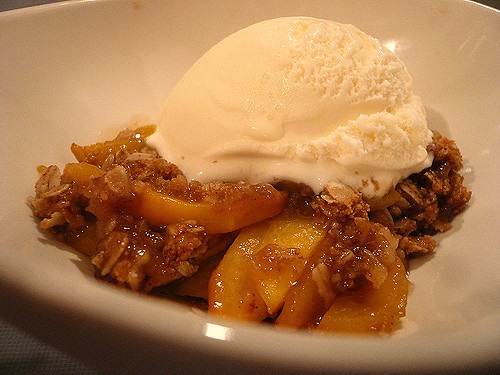
But back to the Times’ ideas of ways to use them. Of course they’ve included peach upside down cake, peach cobbler, peach shortcake, and a few versions of peach pie in their suggestions. But one that really grabbed my attention was their recipe for a coconut cream cake with fresh peaches.
In this trifle-like dessert, a tender coconut macaroon cake is layered with whipped cream and juicy ripe peaches. It’s allowed to rest in the refrigerator so the cake can absorb the cream and peach juices, and the whole thing turns into an almost pudding-like confection.
Also, if you’d rather serve it trifle-style from a large glass bowl, that works well also. This is best after 24 to 48 hours in the fridge, when the cake has absorbed the maximum amount of cream. You can garnish the top with strawberries or more peach slices if you like, or leave it plain. Give this a try:
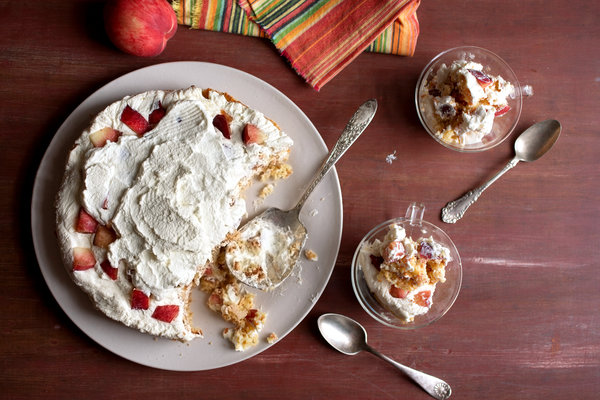
COCONUT CREAM CAKE WITH PEACHES
CAKE:
Nonstick cooking spray, as needed
4 large eggs
1½ cups sugar
⅛ teaspoon fine sea salt
1 teaspoon vanilla extract
4⅔ cups dried unsweetened finely grated coconut
FILLING:
2¼ cups heavy cream
2 to 3 tablespoons confectioners' sugar, to taste
1 teaspoon vanilla extract
3 large to 4 small ripe peaches or nectarines, diced
Sliced peaches or strawberries, or both, for decoration (optional)
Make the cake: Heat oven to 350 degrees. Line a rimmed 11-by-17-inch baking sheet with parchment paper and spray with cooking spray.
Fill a medium pot with one inch of water and bring to a simmer over medium heat.
Combine eggs, sugar and salt in the heatproof bowl of an electric mixer. Whisk until blended. Place bowl over (but not touching) simmering water and continue whisking until warm to the touch. Remove from heat and whip until mixture has tripled in volume, about 5 minutes. Fold in vanilla extract and coconut. Pour into the prepared pan and smooth the top with a spatula.
Bake until cake is firm to the touch and golden brown, about 25 to 35 minutes. Cool on a wire rack for 15 minutes.
Line a 10-inch spring-form cake pan with plastic wrap, leaving overhang. (You’ll need 2 long pieces of plastic.)
Make the filling and topping: Whip 1 1/2 cups/355 milliliters of the cream with the confectioners’ sugar and vanilla. (Reserve the remaining 3/4 cup cream/175 milliliters for serving.)
Run a knife or offset spatula around the edges of the cake; invert onto a clean work surface and peel off the parchment. Cut a 9 3/4-inch round out from the sheet cake and fit it into the bottom of your spring-form pan (trim the cake round if necessary). Spread half the cream over the cake round, then top with half the peaches.
Cut the remaining cake scraps to make another layer of cake on top of the peaches, then top with more peaches and more whipped cream. Wrap the pan tightly in the plastic, using more plastic if needed. Refrigerate for at least 24 hours and up to 3 days.
Release the sides of the pan and unwrap the cake to the point at which the top is exposed. Carefully flip the cake over onto a serving platter. Remove the pan bottom and the plastic wrap. Whip the remaining cream and spread over the cake before serving. Decorate with peaches, strawberries or both, if you like.
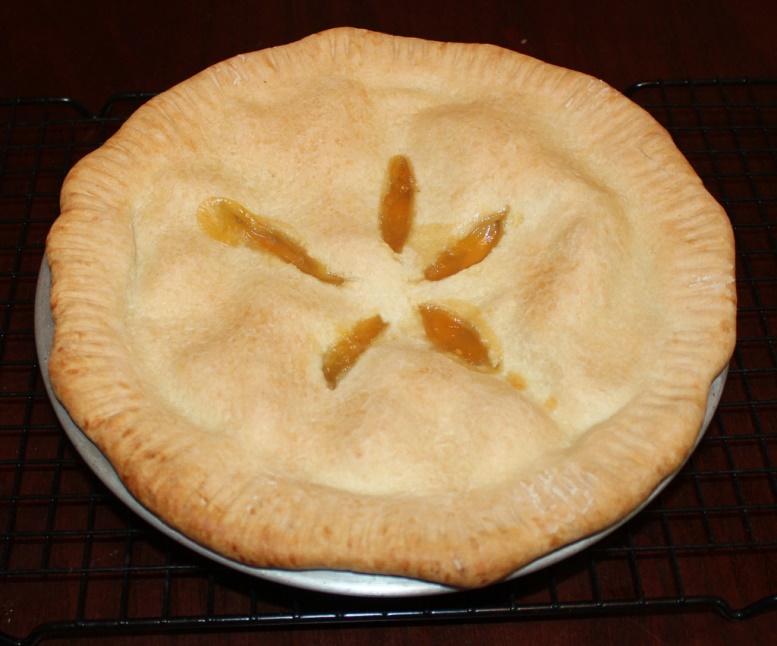
In closing, since pies are always a go-to for using fresh peaches, let’s address a common issue when using fresh peaches (or any other fresh fruit, for that matter) as your filling. The issue is the soggy, runny filling (despite using your thickener of choice) that always creates a soggy bottom crust (yuk). How do you avoid this?
The pastry chef pros that I researched all preferred tapioca over cornstarch and flour as the best thickener. But, they all agreed on something else: You must first toss your sliced peaches with sugar and put them in a colander over a bowl for at least a half hour. This step allows releases excess juice (the soggy-bottom culprit).
Then in a pan or microwave, you should boil down the juices to reduce by half. This is known as maceration/reduction, and it’s the technique to use for any very juicy fruits. Next you return the peaches and juices to your bowl, stir in your thickener and any spices or lemon you may want to use.
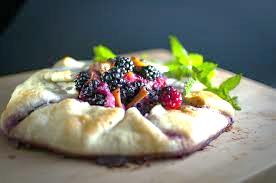
The pastry pros also suggest that if you aren't reducing first, do a rustic tart instead of a double crust. Roll out to half again the diameter you want the tart to be, mound on the sweetened fruit tossed with thickener, to that lesser diameter, then fold over the outer border of dough, pleating it as you go, to cover the outer area. There will be more evaporation from the uncovered area of fruit than with a two crust pie, so a soggy bottom generally isn’t an issue.
Going forward, then, let’s applaud this amazing fruit and commit to no more soggy bottoms when peach pie is your choice for desert.
- www.simplysocialblog.com
- www.flickr.com
- www.cooking.nytimes.com
 Alice Osborne
Alice Osborne
Weekly Newsletter Contributor since 2006
Email the author! alice@dvo.com
